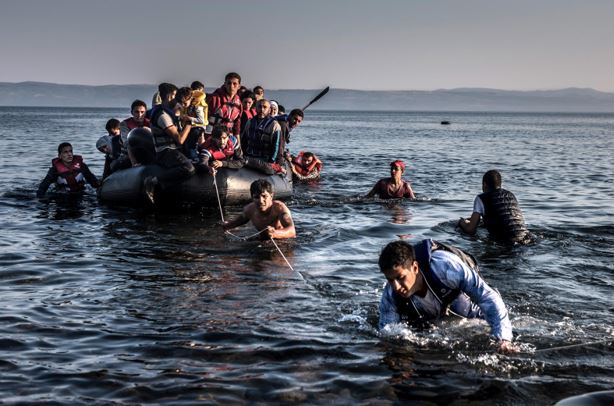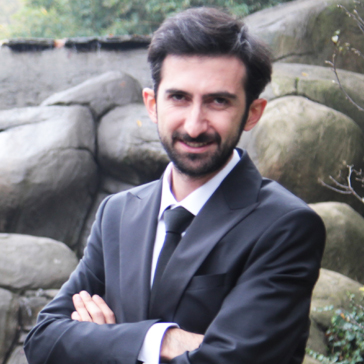Migration Road Europe: Looking at Germany from Greece…

Today, Europe is being tested with the largest wave of immigration after the Second World War. Especially the influx of migration, which experienced its peak period in 2015, put Europe under a test between the ideal of multiculturalism and the myth of "castle Europe".
Forced migration is a human right. Throughout history, people had had to migrate to more stable and safer countries from lands that could not make their lives sustainable anymore. The turmoil caused by Arab riots in the geography of North Africa and the Middle East in 2011 brought political and economic instability in the region. Syria broke up due to power struggles during the Arab uprisings and about 13 million people had to abandon their country.
European Immigration Crisis
Today, Europe is being tested with the largest wave of immigration after the Second World War. Especially the influx of migration, which experienced its peak period in 2015, has put Europe under a test between the ideal of multiculturalism and the myth of “castle Europe”. In the last six years, 18,651 people from the North African countries who wanted to hold onto Italy and Spain drowned in the Mediterranean Sea (1). In the Aegean Sea, the number of immigrants who lost their lives in sixteen years was over 2,000 according to official figures (2). Unfortunately, 30% of these were children.
The first stop country of the migration story in Europe was Greece. Greece is not very far from the phenomenon of migration due to the recent economic crisis: After the economic crisis that erupted in 2010, approximately 400,000 Greeks had emigrated to European countries and to the USA. The country had encountered an influx of migration which mostly consisted of Afghan and Syrian refugees. Between 2015 and 2016, over 1 million immigrants headed to the target country Germany over the territory of Greece.
The immigrants who had oriented to Europe via Turkey in this process had two routes. Some of them went to Italy via Greece and reached Western Europe. Another part followed the Macedonia, Serbia, Austria and Hungary line by land. It is possible to state that immigrants gave a heavy test against their foreign enemies on this route. After the summits held by the European Union, there had been final declarations that raised the border walls. So much so that in 2018, law requests which propose prison sentences for those who help asylum seekers have been brought to the agenda in Hungary. Hence, the EU had launched a violation procedure against Hungary on the grounds that no food had been given to asylum seekers held in the transition areas. The migration started in 2015 was an important test for EU values and norms. Countries such as Serbia, Hungary and Poland gave a bad test and took a strict anti-immigrant attitude in the crisis.
It is necessary to underline that the great burden of the migration crisis in Europe is backed by Germany. Germany accepted approximately 1 million refugees, mostly from the Middle Eastern countries.
After 2016, the flow of migration gradually decreased. It is possible to state that the readmission agreement signed between Turkey and the European Union had been effective on the decreasing of the flow of migration. The agreement which had been signed with the concern of preventing irregular crossings over the Aegean proposed that all individuals who arrived in Greece through irregular transition would be sent back to Turkey. On the other hand, for every irregular immigrant who was sent back to Turkey, the acceptance of one regular refugee to EU countries, that is, a one-to-one formula was stipulated.
How Did European Civil Society Approach Migration?
After the flow of migration in 2015, certain non-governmental organizations in Europe tried to influence the policies of decision-makers at local, national and European levels within the framework of humanitarian aid, while the organizations with a small number of far-right organizations tried to put pressure on the government with anti-immigration actions. It was possible to state that positive attempts against immigrants were dominant especially in Greece. For example, initiatives such as Youth without Borders, Welcome to Europe and Village All Together have built a camp called PIKPA, where migrants can eat and stay on the island of Lesbos in Greece.
In Greece, Migrant Offshore Aid Station, Medecins sans Frontieres, Sea-Watch, Proactiva Open Arms and SOS Mediterraneé supported the search and rescue efforts in the Aegean Sea.
On Lesbos Island, a group of women named “Dirty Girls of Lesbos” collected the garbage, washed dishes and clothes for the hygiene of immigrants staying in camps. “The Smile of the Child”, another Greek NGO, provided psychological support for children in immigrant camps.
There were also many international aid organizations in Greece, such as Médecins Sans Frontières, International Rescue Committee, Danish Refugee Council, Save the Children, Oxfam and Mercy Corp. According to the Greek authorities, approximately 26,000 volunteers from 48 local and 6 international non-governmental organizations struggled for a healthy flow of migration during immigration.
In March 2019, 25 leading non-governmental organizations that carry out humanitarian aid activities in Europe wrote a note on Europe’s humanitarian aid crisis on the borders. Stressing that the EU members should take urgent action on about 30,000 asylum seekers on Greek islands, the NGOs underlined that around 20,000 asylum-seekers in Greek islands are in extremely poor conditions and 12,000 are forced to stay in camps far beyond their capacity.
Many international aid organizations such as ActionAid Hellas, Caritas Hellas, Greek Council for Refugees, JRS Hellas, Greek Helsinki Monitor and Legal Center Lesbos continue to carry humanitarian aid to refugees consisting mostly of Afghans and Syrians, who are trying to reach Europe through Turkey over Greek islands. However, the political contraction in Greece and the public’s political concern about the possibility of increased immigration directly affect the strict approach of decision-makers towards immigrant camps.
In 2016, the target country for immigrants, Germany opened its doors with the slogan of “We can do this” by Chancellor Angela Merkel and was applied by 1.4 million refugees for asylum. German government had developed a series of systems to integrate the refugee population into the country. Federal officials tried to fairly integrate immigrants into 16 states of Germany, taking the tax revenues and population of the states into account regardless of which border was crossed to enter the country.
Various non-governmental organizations have also taken an active role in the flow of migration in Germany. Berlin-based Migration Hub for example, served as a pool for non-governmental organizations to work together for asylum-seeking refugees. Give Something Back To Berlin platform provided assistance especially for the nutritional needs of immigrants. Social Science Works has developed projects specifically for the integration of migrant men into business life. Another noteworthy initiative was CACULA. The organization voluntarily provided immigrants with training to develop their art and design skills.
But in Germany it is possible to state that the anti-immigrant actions of far-right groups have increased in this process. In 2016 alone, over 900 racist attacks that threatened immigrants’ right to life were recorded in police records.
Immigration Is The Reality Of The Next 10 Years!
While the flow of migration gravitates towards Europe from North Africa and the Middle East countries, it deeply affected the social, political and economic dynamics of Europe. In the global system where everyone has the right to protect the integrity of life and body, people set out for the “welfare geographies” regardless of religion, language and race. At this point, the civil society floor that meets migration also has a heavy responsibility. In the last decade, the global system has been facing such challenges as climate change, wars, and economic crises.
The main reason for migration is unstable geographies… As Warsan Shire points out in her poem: “No one puts their children in a boat unless the water is safer than the land.”


Bizi Takip Edin